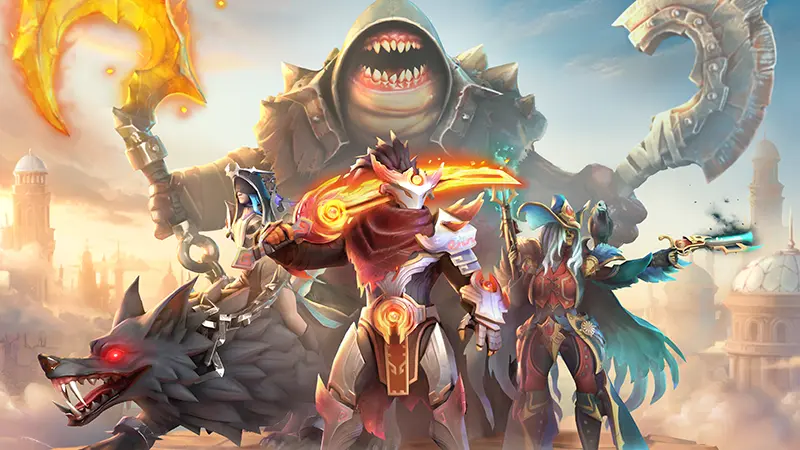Overview of Dota 2’s Evolution Since 2023
Since 2023, Dota 2 has undergone a remarkable evolution, establishing itself as a dynamic presence in the world of online gaming. The updates incorporated during this period have significantly transformed game mechanics, enhanced graphics, and refined gameplay dynamics, all of which have fostered a richer experience for players and spectators alike.
One of the most notable alterations has been the introduction of advanced game mechanics, which have expanded the strategic possibilities within matches. The developers have listened closely to player feedback, implementing balance changes that not only promote fairness but also inspire more nuanced gameplay styles. An increase in the variety of build paths has allowed players to adapt their strategies in real-time, making matches more unpredictable and engaging.
In addition to game mechanics, graphical upgrades have played a significant role in the game’s evolution. Enhanced visual fidelity, combined with a more fluid animation system, has brought the Dota 2 universe to life in unprecedented ways. The new graphical updates have not only improved the aesthetic appeal of the game but also contributed to clearer visual cues during intense gameplay moments, enhancing player responsiveness.
Gameplay dynamics have also seen substantial shifts, particularly in how heroes interact with one another. New roles and hero reworks have encouraged players to explore uncharted territories within team compositions. The introduction of new heroes has injected fresh energy into the game, attracting both seasoned veterans and newcomers. The community’s reaction has been overwhelmingly positive, as diverse strategies and heroes create a constantly evolving competitive environment.
Overall, the developments from 2023 to 2025 have resulted in a reinvigorated Dota 2 landscape. Player engagement has surged, and community discussions have flourished, paving the way for an exciting future filled with opportunities for innovating strategies and unforgettable moments in tournaments.
Goals for Dota 2 in 2025
As the gaming landscape continues to evolve, the developers of Dota 2 have set forth a comprehensive set of strategic goals for the game in 2025. One of the primary objectives revolves around enhancing player retention. This focus is not merely on attracting new players but also on keeping existing players engaged and invested in the game. To achieve this, developers plan to implement a series of community-driven events, regular content updates, and innovative features that can rejuvenate interest and mitigate player fatigue.
Another crucial goal is to increase esports participation. Dota 2 has long been a staple in the esports arena, and to maintain its prominence, the developers aim to create more pathways for aspiring esports athletes. This will include enhanced support for amateur tournaments, improved matchmaking systems, and pathways for players to ascend to professional status. By nurturing grassroots involvement, the developers hope to enrich the competitive scene and ensure its sustainability.
Optimizing gameplay balance remains an ongoing focus for the developers as well. As new heroes are introduced, players expect a finely-tuned gameplay experience. Balanced heroes encourage fairness which is key to competitive integrity. The developers are committed to ongoing analysis and updates based on player feedback, as well as data-driven insights to ensure that no particular strategy or hero dominates the playfield for too long.
Lastly, fostering a more inclusive gaming community is paramount. By encouraging diverse representation within the game and addressing accessibility issues, Dota 2 aims to create a welcoming environment for players of all backgrounds. These goals are strategically aligned with contemporary trends in the gaming industry, responding to community feedback and emphasizing the importance of a supportive gaming culture. By addressing these areas, Dota 2 aspires to solidify its position as a leader in both casual and competitive arenas.
Introduction of New Heroes and Their Mechanics
As Dota 2 approaches 2025, the introduction of new heroes remains a pivotal factor in shaping the game’s landscape and its competitive environment. Each new character is carefully designed with unique abilities and mechanics that contribute significantly to the existing gameplay strategies. The distinct roles of these heroes—from initiators and carry heroes to disablers and support characters—play a crucial role in team compositions, directly impacting game dynamics. Players are encouraged to explore various strategies through the synergy these new characters offer alongside their established counterparts.
The recent expansion of the hero pool has influenced how players engage in Dota 2’s meta-game. Heroes with abilities that complement or counter those of existing heroes introduce an added layer of complexity. As new characters integrate into the existing landscape, players must adapt their strategies, often leading to shifts in item builds and gameplay styles. This constant evolution is paramount, as it allows for diverse tactical options depending on the heroes selected in each match.
Player reception to these new heroes has varied, with some gaining immediate popularity while others take longer to find their place within competitive play. The feedback from casual games often shapes the perception within professional settings, guiding how these heroes are utilized in tournaments. Communities extensively discuss the potential strengths and weaknesses of new characters, driving a more profound understanding of their impact on the game’s culture and competitive structure. Ultimately, the continual integration of innovative hero mechanics serves not only to refresh gameplay experience but also to maintain Dota 2’s status as a leading title in the eSports arena.
The Impact of New Heroes on Competitive Tournaments
The introduction of new heroes in Dota 2 has significant ramifications for the competitive scene, particularly regarding tournament play. These new heroes can substantially alter the established balance, affecting team compositions, drafting strategies, and overall gameplay dynamics. Teams are required to adapt quickly to these changes, often necessitating a reevaluation of their strategies in response to the emerging meta.
One clear example of this impact can be observed in recent high-stakes tournaments where teams faced the challenge of incorporating newly added heroes efficiently. For instance, during the last International, a newly introduced hero not only shifted player preferences but also transformed the roles players filled within their teams. Teams that swiftly integrated these heroes into their lineups—leveraging their unique abilities and strengths—generally performed better than those that adhered to familiar compositions. This has highlighted the importance of flexibility and innovation in competitive play.
Analysts have been actively discussing the evolving meta, and new heroes often serve as focal points within this discourse. By analyzing tournament outcomes, experts note how the introduction of new heroes can lead to a resurgence of specific tactics or strategies that had previously fallen out of favor. For example, a new hero’s capability might synergize exceptionally well with existing favorites or completely counter popular picks, leading to shifts in the game’s strategic landscape.
Moreover, as teams refine their approaches, they often draw on lessons learned from these successful integrations. This creates an ongoing cycle of adaptation, where understanding of new heroes becomes an essential part of a team’s preparatory process for tournaments. As competitive Dota 2 continues to evolve, the ability to swiftly and effectively incorporate new heroes into team strategies will remain crucial for success.


No responses yet